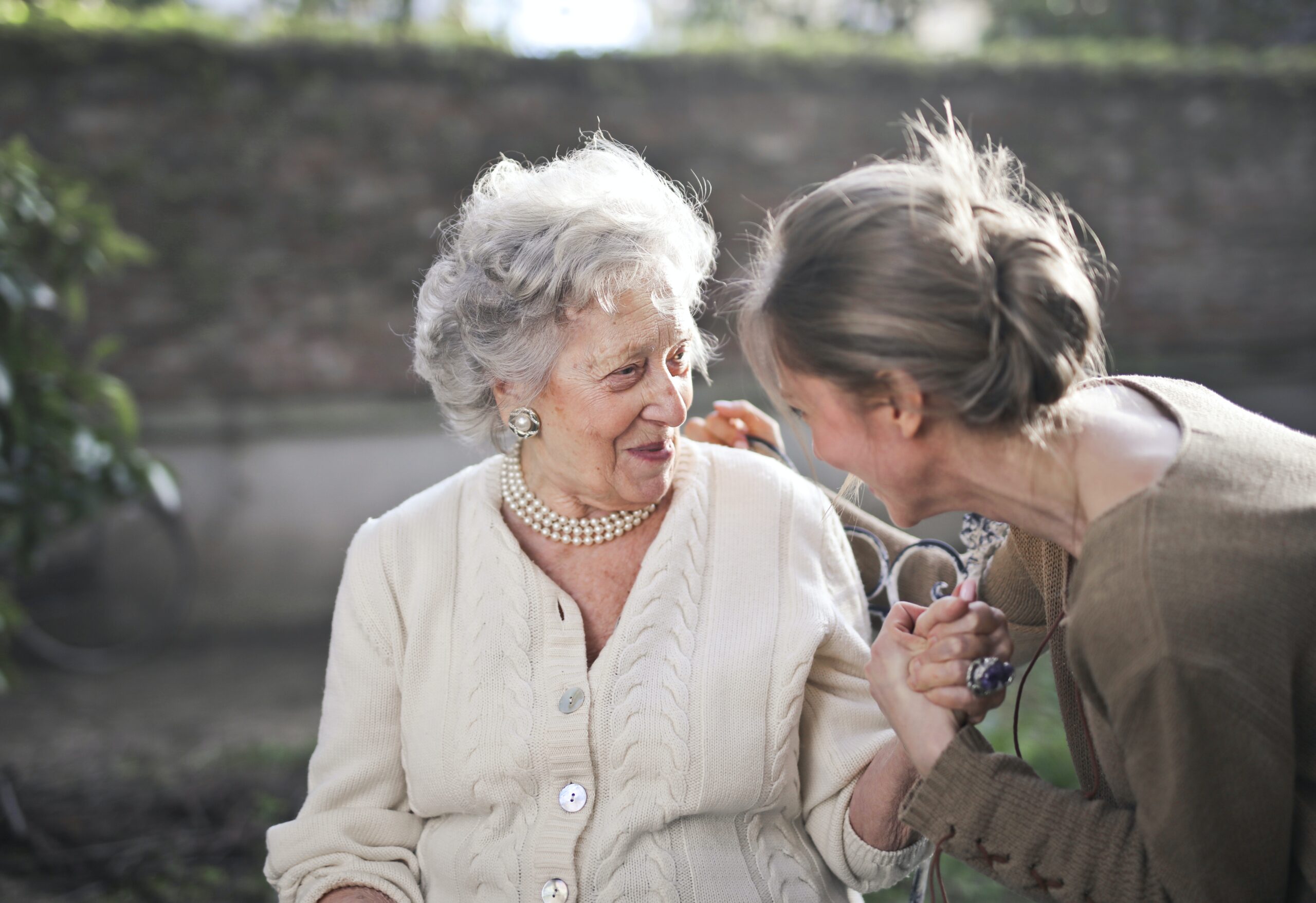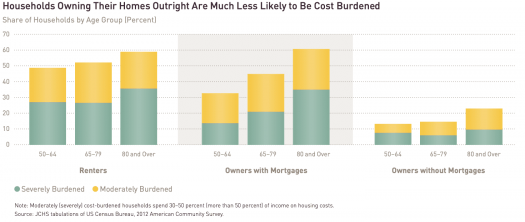Over 36% of Americans provide unpaid care for a family member, so the chances are high that you have clients who are providing care for a family member. More than 40 million caregivers are over 65, which compounds the financial issues around providing care.
The costs of providing care for a parent or other loved one are more than financial. In this post, we’ll examine one of the largest financial burdens older adults face: housing. Next, we’ll look at health care.

Photo by Andrea Piacquadio from Pexels
Housing
A study by the Global Coalition on Aging found that 3 of 4 Americans over age of 50 wanted to stay in their own homes for as long as possible. Indeed, only 4.5% of the population over the age of 65 lives in nursing homes. Another 2% live in assisted living facilities. The AARP survey found that while many wish to stay in their own homes, some know this isn’t a possibility due to their health or financial issues.
About half of the population over 65 is currently paying off a mortgage. As adults age out of the workforce, it may not be financially feasible to keep a home with a mortgage payment.
Creative arrangements such as house-sharing or an accessory dwelling unit, sometimes called a “granny pod” have become more common as the Boomer generation continues to gray. Granny pods are small structures, around 400 square feet, that can fit in a backyard. They are usually outfitted with a kitchen and bathroom, providing independent living alongside the security of having support nearby.
Like the women of The Golden Girls television show, many aging adults find comfort in house-sharing. This practice allows roommates to share household tasks and expenses with peers and it also adds safety in the event of a health concern or a fall.
Another unique living arrangement for Military Veterans is the Medical Foster Home program through the Veteran’s Administration (VA). Medical Foster Homes are private homes in which a trained caregiver provides services to a few individuals. Some, but not all, residents are Veterans. The VA inspects and approves all Medical Foster Homes. The video clip below shows one family’s experience of opening up their home to Veterans as a Medical Foster Home.
Of course, many elderly folks might find themselves moving in with relatives. This provides a reduction in expenses and the security and support of having around-the-clock companionship and care. Still for others, living independently is a good option and, maybe with some renovations, aging adults can remain in their own homes indefinitely.
Home Modifications
The most common difficulty adults 65 and older cited in research conducted by the Joint Centers for Housing Studies at Harvard University (JCHS) was mobility. Modifications such as ramps at entryways cost around $2,400. Grab bars in bathrooms and improved lighting are other cost-effective safety precautions that can make aging in place feasible. However, extensive modifications such as stairlifts for two-story homes and accommodations for wheelchairs can be very costly, ranging from $8,000 to $75,000.
When health concerns reach a higher level of need, a family might need to evaluate the cost of assisted living against the cost of home modifications. The national average cost of an assisted living facility is $4,000 a month. If the senior is in primarily good health, relocating to a more accessible home might be a prudent option.
Moving
Downsizing may allow the older adult the independence of living alone longer, but in a home that is better adapted to their new needs. However, moving comes with its costs, including real estate commissions, modifications to the new home, and mover’s expenses.
Moving can allow older adults to tap into their largest financial resource if the home they’re selling was owned outright. Relocating may allow seniors to connect with a community of peers which may have positive impacts on their social and mental well-being. Aging adults who can relocate to more densely populated communities with sidewalks and transportation might especially thrive. Research by the JCHS found that older adults living in rural communities reported higher levels of isolation, a concern that increases as aging adults become unable to drive. Additionally, older adults—particularly women—are likely to live alone, with single-person households making up 40% of all households in their 70s and 60% of households in their 80s.
In our next post we’ll look at health care and the options available to Veterans and civilians for long-term care.
Be sure to RSVP to attend our May 12 webinar, The Financial Implications of Caring for an Aging Parent.
References
Providing Healthy and Safe Foods As We Age: Workshop Summary. Institute of Medicine (US) Food Forum. Washington (DC): National Academies Press (US); 2010.
The Cost of Aging. National Aging in Place Council Handbook. Retrieved April 7, 2020.
Housing America’s Older Adults: Meeting the Needs of an Aging Population. Joint Centers for Housing Studies at Harvard University. 2014.
5 facts about family caregivers. (2015). Retrieved 7 April 2020, from www.pewresearch.org/fact-tank/2015/11/18/5-facts-about-family-caregivers/
OneOp Webinar: Understanding Long-Term Care: Extended Care and Housing















